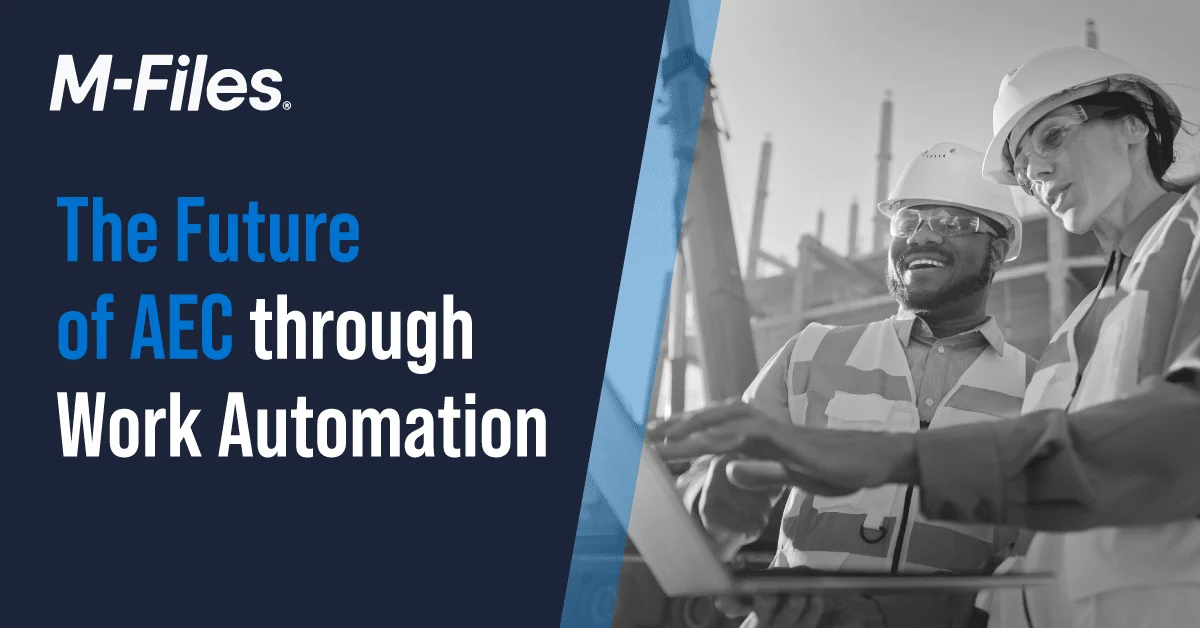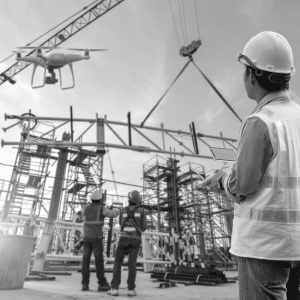The Future of AEC through Work Automation

According to a McKinsey report, the $12 trillion architecture, engineering, and construction (AEC) industry has traditionally slow to digitize and innovate. However, recent emerging technology in the sector has accelerated to address strong demand for infrastructure, a shortage of skilled labor, and increased stakeholder pressure for data transparency and integration.
The AEC industry faces disruptive challenges—intense competition and limited financial resources for innovation. Even advanced technologies such as Building Information Modelling (BIM) encounter obstacles such as prolonged timelines. There's fresh hope for the AEC industry, however. Work automation is emerging as a gamechanger for the sector's future success.
As projects become more complex, the AEC industry must keep pace with evolving technology, new materials, and building codes. These advancements often mean significant investments to maintain expertise.
The AEC industry can enhance efficiency, ensure compliance, and reduce project risks with work automation. Potential improvements from knowledge work automation adoption will transform the sector's future automation.
Embracing automation holds the promise of refining design and construction processes. The construction industry requires improved collaboration among various stakeholders, including architects, engineers, contractors, and suppliers. This can be accomplished by leveraging digital platforms and collaboration tools that enable effective communication and data sharing among team members.
Challenges with Embracing Digital Transformation
The AEC sector will encounter obstacles in the adoption of innovation. The cautious approach to adopting work automation stems from concerns about initial integration costs.
Financial limitations, coupled with fierce competition, also pose challenges for the AEC industry. Building structures and projects can be costly, leaving companies with limited capital.
Competition among firms intensifies the pressure to keep costs low, leaving little room for exploring and implementing innovative technologies. Limited financial resources become a barrier to investing in innovative solutions such as automation software.
Design processes within the AEC industry are inefficient, contributing to delays and complications. Manual work needed for correcting errors bloats project timelines and increases the risk of delays.

Transforming the AEC Industry with Knowledge Work Automation
Knowledge work automation has become a transformative force in the AEC industry, streamlining processes and enhancing efficiency. Workflow automation plays a pivotal role by digitizing and optimizing routine tasks, reducing manual work, and minimizing errors. This is especially in project management, where tight deadlines and accuracy are paramount.
Automation also brings significant benefits to compliance and document management. Automating compliance checks ensures projects meet industry standards and legal requirements amid regulatory changes. Document management systems, powered by automation, simplify the organization, retrieval, and sharing of project-related documents, fostering collaboration, and ensuring stakeholders have access to the latest information.
Artificial Intelligence (AI) represents another frontier in knowledge work automation for the AEC industry. AI assists architects and designers by automating complex design processes, generating iterations, and predicting potential issues. This not only accelerates the design phase, but also enhances the quality of the final output.
Technology such as document management empowers the decision automation of work processes, opening new avenues for efficiency and progress.
Advancing AEC with Innovations
Process automation strongly impacts the productivity of AEC project teams. It speeds tasks, removes obstacles in teamwork coordination, and ensures projects are on time. By removing menial or mundane tasks, individuals can focus on what's important.
Some of the technology trends in the AEC industry that enhance efficiency, accuracy, and innovation include:
Building Information Modeling (BIM)
BIM automates the creation and management of digital information concerning the physical and functional characteristics of buildings and infrastructure. It also enhances collaboration and high-level decision-making across the project lifecycle.
Robotics in Construction
Robotic process automation (RPA) boosts efficiency, reduces labor costs, and operate well in hazardous environments.

Digital Twin Technology
Digital twins create a virtual replica of a physical structure, allowing real-time monitoring and analysis. This assists in predictive maintenance, performance optimization, and complex problem-solving.
AI-driven Project Scheduling
Analyzing historical project data, assessing risks, and optimizing schedules are all done by AI. AI and automation decrease delays and enhance overall project planning.
Augmented Reality (AR) for construction
To visualize construction projects in the real world, professionals turn to AR. It aids in design thinking with visuals, project collaboration, and on-site decision-making.
Future of Automation in AEC
Technology and knowledge work automation are shaping the future of the AEC industry. Innovations in the field redefine traditional practices and optimize design, construction, and process management.
FAQs
What benefits do knowledge workers in the AEC industry gain from automation?
Automation in the AEC industry boosts efficiency by streamlining tasks, allowing workers to focus on more valuable activities. It mitigates risks, enhances collaboration, saves time, and creates opportunities for innovation in design and construction processes.
What are the concerns of automating knowledge work in the AEC industry?
While offering substantial benefits, automation in AEC involves initial implementation costs and potential resistance to change among workers. The need to learn innovative technologies, job displacement concerns, and heightened security and compliance considerations are additional factors that should be addressed.








